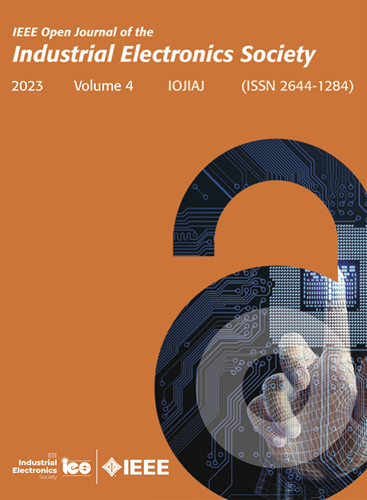基于极大似然和变收敛因子的轨道交通直流电容电容估计方法
IF 7.2
1区 工程技术
Q1 AUTOMATION & CONTROL SYSTEMS
引用次数: 0
摘要
薄膜电容器作为直流电容广泛应用于轨道交通变流器中。在艰苦的工作条件下,其电容会减小,电容估计是状态监测的必要条件。目前,轨道交通应用中存在着噪声强、采样频率低、修改等问题。本文提出了一种基于极大似然和变收敛因子的电容估计方法。输入电压和电容电压用于建模。采用递推最小二乘法求出模型参数和信号噪声的初始值。然后,采用Newton-Raphson迭代的极大似然(ML)进行参数计算,并设计了可变收敛因子来解决数值发散问题。电容得到了准确的估计,挑战也得到了很好的解决。该方法在深圳地铁集团车辆上进行了验证,误差在2%以内。性能分析表明,该方法对早期信号故障和电阻偏移具有一定的抗扰性。对比结果证明了该方法在精度和收敛速度上的优势。本文章由计算机程序翻译,如有差异,请以英文原文为准。
A Capacitance Estimation Method for DC-Link Capacitors in Rail Transit Based on Maximum Likelihood and Variable Convergence Factor
Film capacitor is widely used as dc-link capacitor in rail transit converters. Its capacitance decreases under hard working conditions and the capacitance estimation is necessary for condition monitoring. Currently, there are several challenges in rail transit applications: strong noise, low sampling frequency, and modification. In this article, a capacitance estimation method based on maximum likelihood and variable convergence factor is proposed. The input and capacitor voltages are used for modeling. The initial values of model parameters and signal noise are evaluated by recursive least square (RLS). Then, the maximum likelihood (ML) with Newton–Raphson iteration is used for parameter calculation, and a variable convergence factor is designed to solve the numerical divergence problem. The capacitance is accurately estimated and the challenges are well addressed. The proposed method was verified on the vehicles of Shenzhen Metro Group, and the error was within 2%. Performance analysis showed that the proposed method had certain immunity in the case of early signal faults and resistance offsets. The comparison results proved the advantages of the proposed method in accuracy and convergence speed.
求助全文
通过发布文献求助,成功后即可免费获取论文全文。
去求助
来源期刊

IEEE Transactions on Industrial Electronics
工程技术-工程:电子与电气
CiteScore
16.80
自引率
9.10%
发文量
1396
审稿时长
6.3 months
期刊介绍:
Journal Name: IEEE Transactions on Industrial Electronics
Publication Frequency: Monthly
Scope:
The scope of IEEE Transactions on Industrial Electronics encompasses the following areas:
Applications of electronics, controls, and communications in industrial and manufacturing systems and processes.
Power electronics and drive control techniques.
System control and signal processing.
Fault detection and diagnosis.
Power systems.
Instrumentation, measurement, and testing.
Modeling and simulation.
Motion control.
Robotics.
Sensors and actuators.
Implementation of neural networks, fuzzy logic, and artificial intelligence in industrial systems.
Factory automation.
Communication and computer networks.
 求助内容:
求助内容: 应助结果提醒方式:
应助结果提醒方式:


